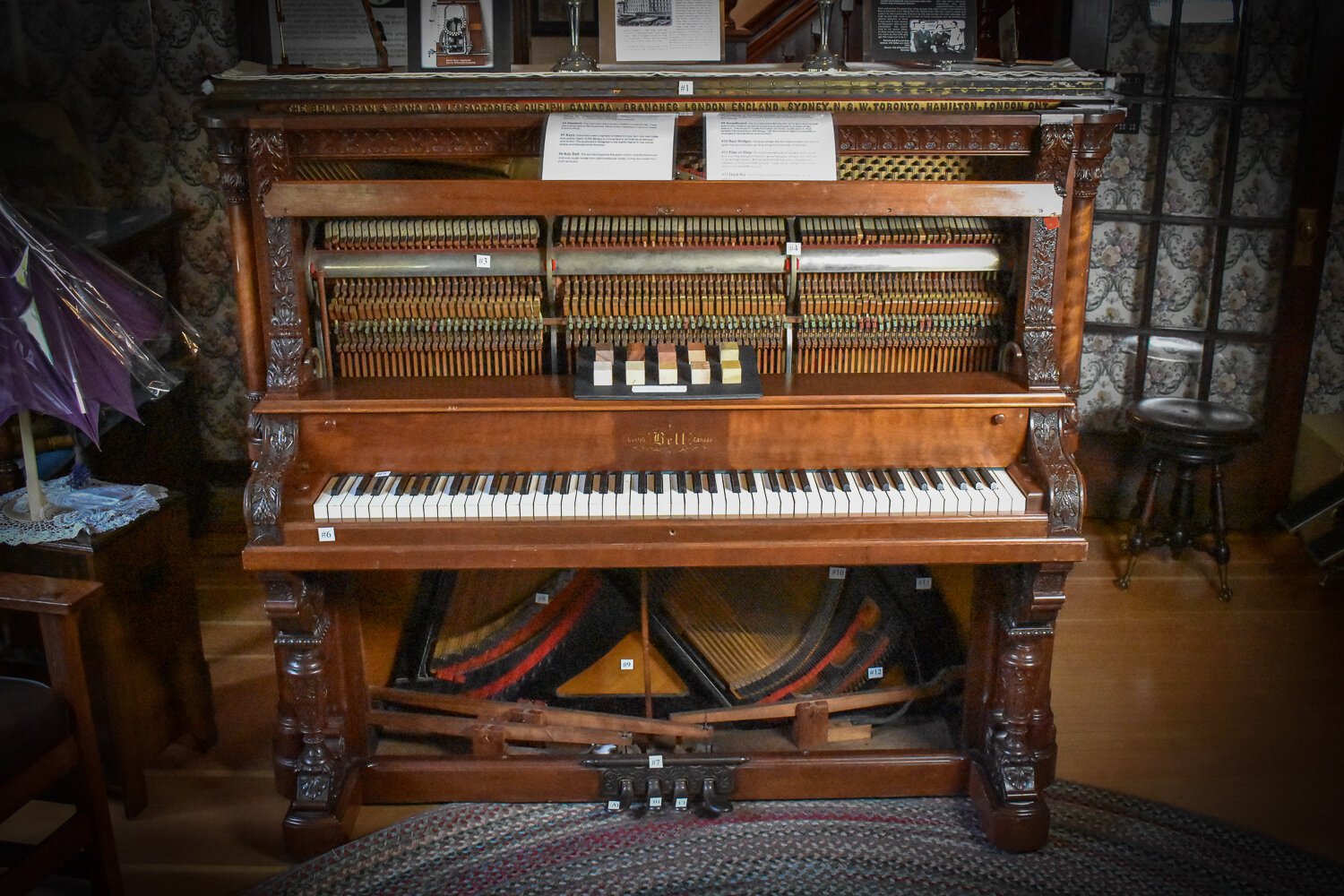The Inspiration Behind Our New Exhibit “Deconstructed”
Each day when we return from school or work to the warmth and comfort of our homes, we take off our shoes, hang up our coats, and take a moment to relax and decompress, however brief it may be.
In those moments of decompression, have you ever wondered about the stories behind the things you use at home every day?
Over ten years ago, Bill Bryson explored these questions and ideas in his book called At Home. In it, Bryson tours his house room by room, investigating the history of the everyday objects he finds in each space. This book inspired our current exhibit at Mackin House.
Unlike Bryson, we were selective with what we chose to include in our exhibit. The tour includes six displays of various artifacts spread across the three rooms of Mackin House’s main floor. The first section of the tour, the parlour, showcases three displays: umbrellas, pianos, and tobacco. What was the inspiration behind creating the umbrella? How is tobacco farmed? What does the inside of a piano look like? The parlour answers all these queries and more.
The tour continues in the dining room, which features a display on eating utensils. Humans have been using eating utensils since they discovered how to make tools about two and a half million years ago. Such a span of time with tools contributed to different cultures across the globe having their own customs when it comes to eating utensils. Chopsticks are not nearly as prevalent in North America as they are in Asia, and the design of chopsticks differs slightly from country to country. Other regions like India, Ethiopia, and the Middle East use bread as an eating utensil. Airlines, on the other hand, have an interesting history with cutlery. Did you know airlines used to use metal cutlery exclusively? Our display tells the story of why airlines shifted to plastic utensils.
The final stop in our exhibit is the kitchen, which includes a well-stocked pantry. The pantry shelves host an interesting array of herbs and spices. The pantry features everything from black pepper to nutmeg to saffron, with panels telling stories of bloody trade wars across the seas as well as brief histories of the companies involved in the herb and spice trade. Meanwhile, in the kitchen proper, our tour concludes in a warm and bright fashion with a display on heating and lighting. Learn about the impact of coal in the Industrial Era. Peruse panels on wicks, oil lamps, and early space heaters. Discover the dawn of electricity. In the coming months we will be sharing more in-depth information about each section of the exhibit here on the blog. Watch our social media for updates with new posts.
Deconstructed: The Hidden History of Everyday Objects will be on display until June 2021. As per the instructions and recommendations of British Columbia’s health officials, the wearing of facemasks is mandatory in the museum until further notice. Our exhibit is also a one-way tour. Guests will enter through the front door of Mackin House and explore each of the three rooms one at a time. Guests are welcome to peruse the exhibit for as long as they like so long as they maintain social distancing guidelines and follow the one-way tour. We look forward to your next visit!



